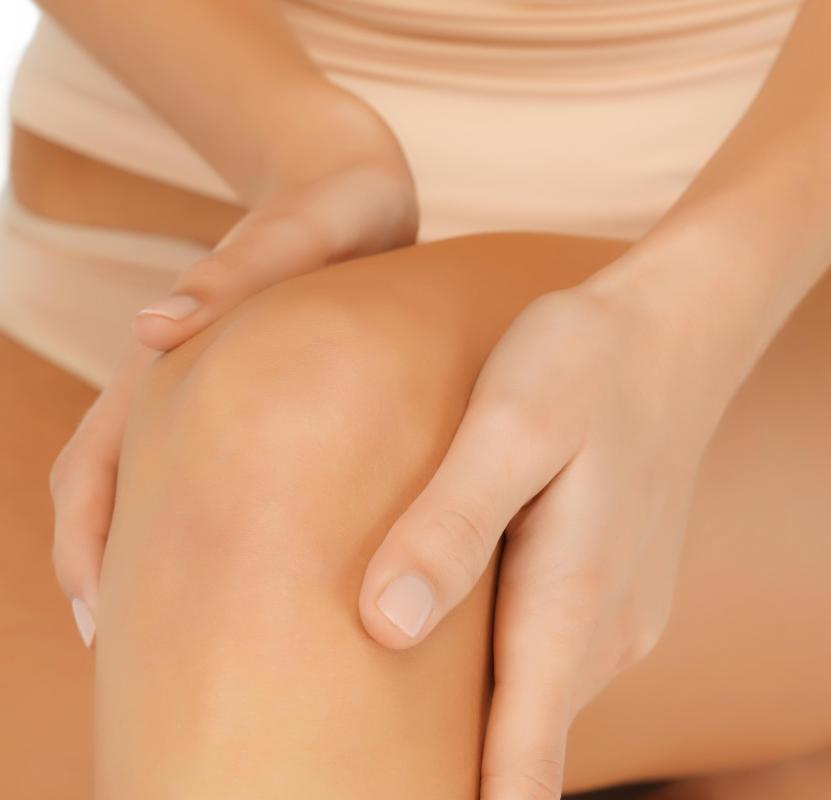At TheHealthBoard, we're committed to delivering accurate, trustworthy information. Our expert-authored content is rigorously fact-checked and sourced from credible authorities. Discover how we uphold the highest standards in providing you with reliable knowledge.
What is a Valgus Deformity?
Valgus deformity is a term used in orthopedics to describe a condition in which a segment of a joint or bone is angled outward. The opposite of a valgus deformity is a varus deformity, in which a segment of a bone or joint is angled inward. The two terms, however, are often mistakenly interchanged. Such types of deformities are most often present in hips, knees, and feet. When necessary, these deformities can, to some degree, be surgically repaired.
Though they are often interchanged, the terms valgus and varus are always supposed to refer to the specific direction in which the distal segment in the joint is facing. The distal segment of a joint is the point farthest away from center of the spot where the separate bones physically join. In Latin, valgas means “knock-kneed” and varus means “bowlegged.” The modern names for these deformities were derived from these Latin terms. A valgus deformity always refers to a condition in which the distal point of the joint points outward, while a varus deformity always refers to a condition in which the distal point of the joint points inward.

Genu valgum, a condition colloquially described as “knock-knees,” is a condition in which the knees angle in and, often, touch each other. In this condition, the femur is angled inward in relation to the hip; this is a varus deformity. In the same condition, however, the knees face outward; this is a valgus deformity. Both deformities are present in the same condition, so it is vital to use the proper terms to describe them.

There are several different types of valgus deformities depending on the specific joint that is deformed. In the hip, such deformities are known as coxa valga. Typically, the shaft of the femur is angled outward from the neck of the femur. Cubitus valgus describes a deformity in the elbow and results in turned-in elbows. In hallux valgus, the big toe points toward the second toe, and the joint points outward, away from the foot.

Valgus deformities can occur at several other joints and bones, such as the knees and ankles. A varus deformity can occur at the same variety of joints and bones that a valgus deformity can occur at. Without treatment, these deformities can place stress on other joints and bones and cause further problems. The main problems associated with a valgus deformity are pain and difficulty of movement. Successful surgery can partially or completely fix these problems.
AS FEATURED ON:
AS FEATURED ON:
















Discussion Comments
I have had a left knee replacement which didn't work, now I have to have a revision. I was also diagnosis with valgus deformity. Is the reason that the replacement didn't work is because of the valgus deformity.
Curious if one has to wait till there are problems or can one head problems off by electing to address obvious valgus knee surgically?
In addition to people having valgus deformity, dogs and cats can have this condition, also.
The neighbor down the street has a dog with this condition.The owner took him to a specialist, who said his problem was double bone growth in the joints. His paws pointed out and he would bite his paws.
Apparently, his case isn't too serious, but he could have surgery. The surgeon would take out some of the bone and then stabilize the rest of the bone. Luckily, he probably will not have any long term effects except arthritis in ten years or so. Lucky dog!
I'm thinking that the valgus deformity and the varus deformity are usually taken care of by surgery these days. I remember back in the 50s, I saw people who were knock-kneed and bow-legged.
I recall the cowboys on TV shows were often bow-legged.
The condition where the big toe point toward the second toe must be really painful, especially when wearing shoes.
It's good to know that this painful deformity that can cause problems with other joints, can, at least, be partially healed by surgery.
Post your comments